IPACC
closeThe Intergovernmental Panel on Art and Climate Change (IPACC), is a fictional institution which refers to the Intergovernmental Panel on Climate Change (IPCC), the United Nations’ body assessing the science related to the climate crisis. Winner of the Nobel Peace Prize in 2007, the IPCC has been a key organization in disseminating greater knowledge concerning man-made climate changes and the steps that need to be taken to counteract them. Acknowledging that both the impacts of and solutions to climate change are deeply mediated by culture, the IPACC explores a stronger integration of the arts, the social sciences and humanities, within the interface between science and global policymaking. By departing from the structure of the IPCC, this meta-organization speculates on forms of ‘instituting otherwise’, advancing the conjunction between contemporary art, ecology, science and radical policy. The IPACC was the core concept and object of discussion which spanned two symposiums in two consecutive years at the Jan van Eyck Academie. The project unfolded simultaneously to the IPCC’s 6th Assessment Cycle, a comprehensive review of the latest climate science that is policy-relevant but not prescriptive, and can be instrumental to develop climate protocols.
IPACC- Intergovernmental Panel on Art and Climate Change. Design by Rudy Guedj.
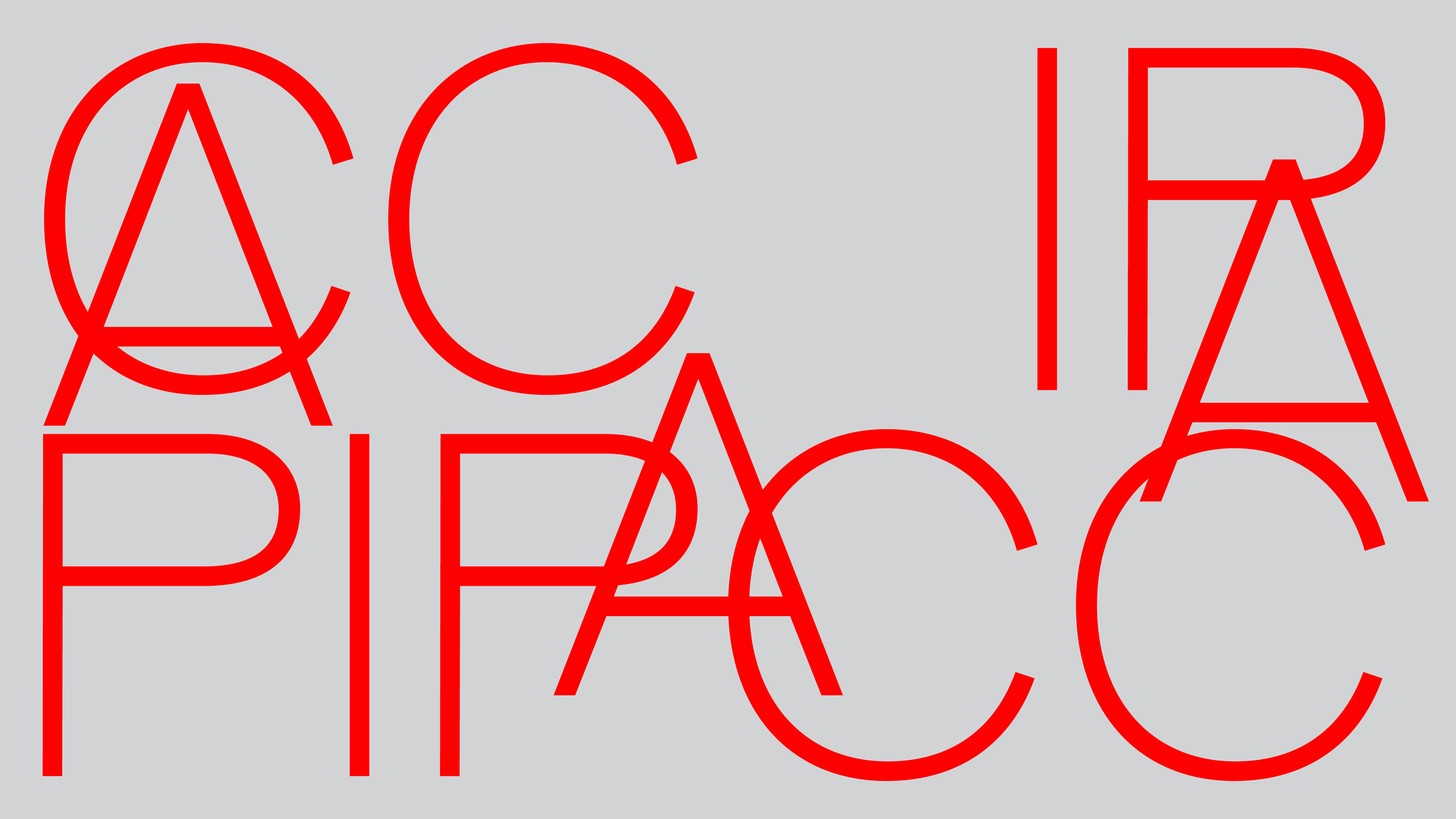
The first symposium happened in 2021 and the Intergovernmental Panel on Art and Climate Change (IPACC) served as an object for discussion on if and how art and culture could have a stake within an institutional framework such as the IPCC. The event also proposed an exercise in long-term thinking, moving beyond our current political, economic and social short-sightedness and towards the imagination of systems that would leave future generations with sustainable environments and societies. On the first day of the event, a series of keynote presentations and conversations explored how to rethink core aspects of our communities, societies and institutions in order to ensure that they are underpinned by values and structures that secure the long-term thriving of our planet. What is the role of artistic practices in such process?1
Speakers of the first day
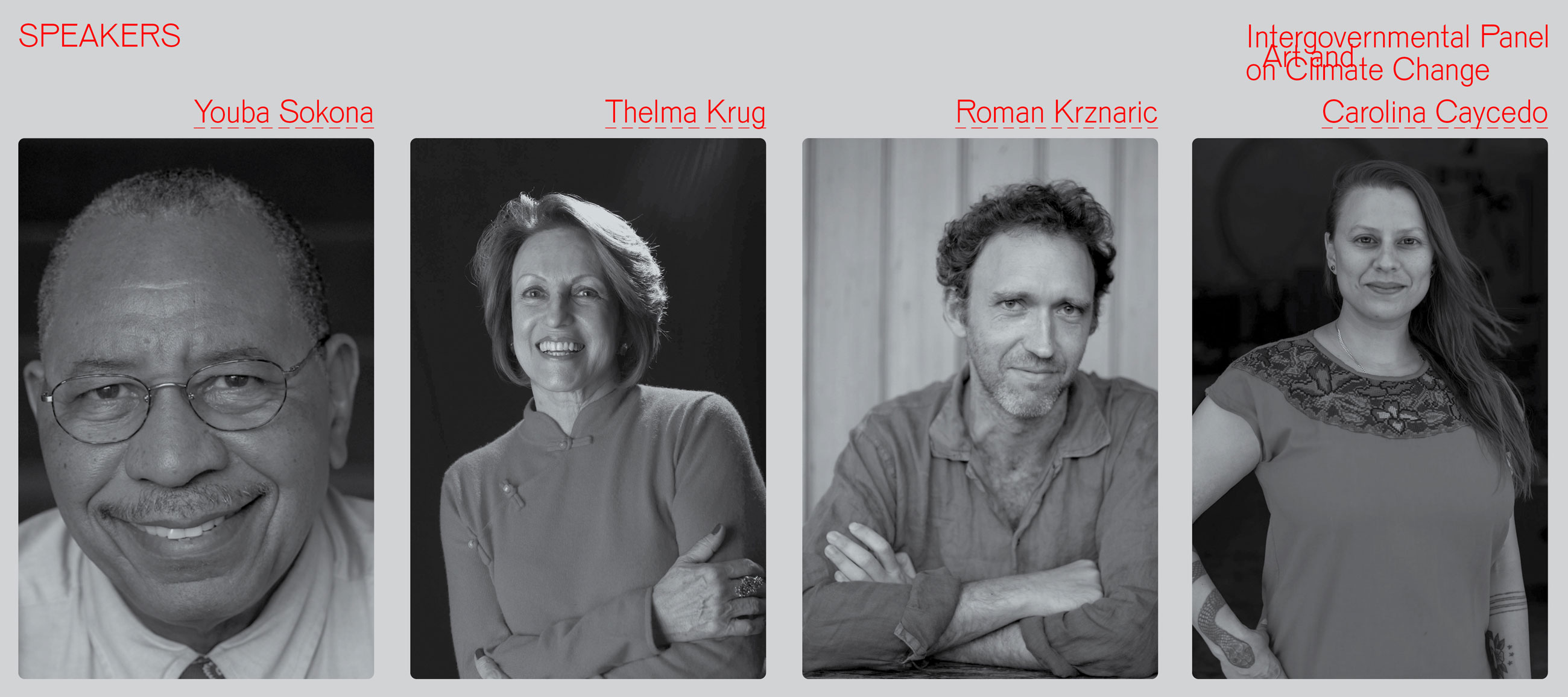
The following two days were centered around the debate on the IPACC, and gathered professionals from the fields of arts and beyond in a structure for conversation inspired by the Japanese political movement and decision-making strategy of Future Design.2 In the first iterations of the Future Design movement interlocutors were divided in two groups, one representing the Present and another enacting a generation from the Future. The inclusion of this forthcoming generation in the decision-making process has deep connections with the seventh-generation principle of indigenous cultures, which urges the current generation of humans to live and work for the benefit of the seventh generation ahead, about 140 years into the future. The seventh-generation notion takes root in the founding document of the Iroquois Confederacy, a historical indigenous confederacy in North America and the oldest living participatory democracy on Earth. This philosophy is also common in many other Native American nations and indigenous peoples around the world.
For this event, participants in the group of the Present3 departed from the fictional scenario that the IPCC wished to include arts and culture in their workings. The group thought prospectively on how an Intergovernmental Panel on Art and Climate Change could be implemented, among other questions such as: How can speculative and philosophical ideas be translated into policy-making strategies? Is an institutional structure such as the IPCC appropriate to convey the importance of the artistic imaginary in the action on climate emergency? What are the inherent legacies and biases of such a structure? The natural sciences produce their own distinctive constructions of nature following the entanglements of economics, politics and cultural perceptions of nature at the time. Can a critical perspective from the arts be productive in countering these biases and the power relationships at play in the nature-science-climate discussion? What are the transformations the IPACC could bring to the future?
Group of the Present
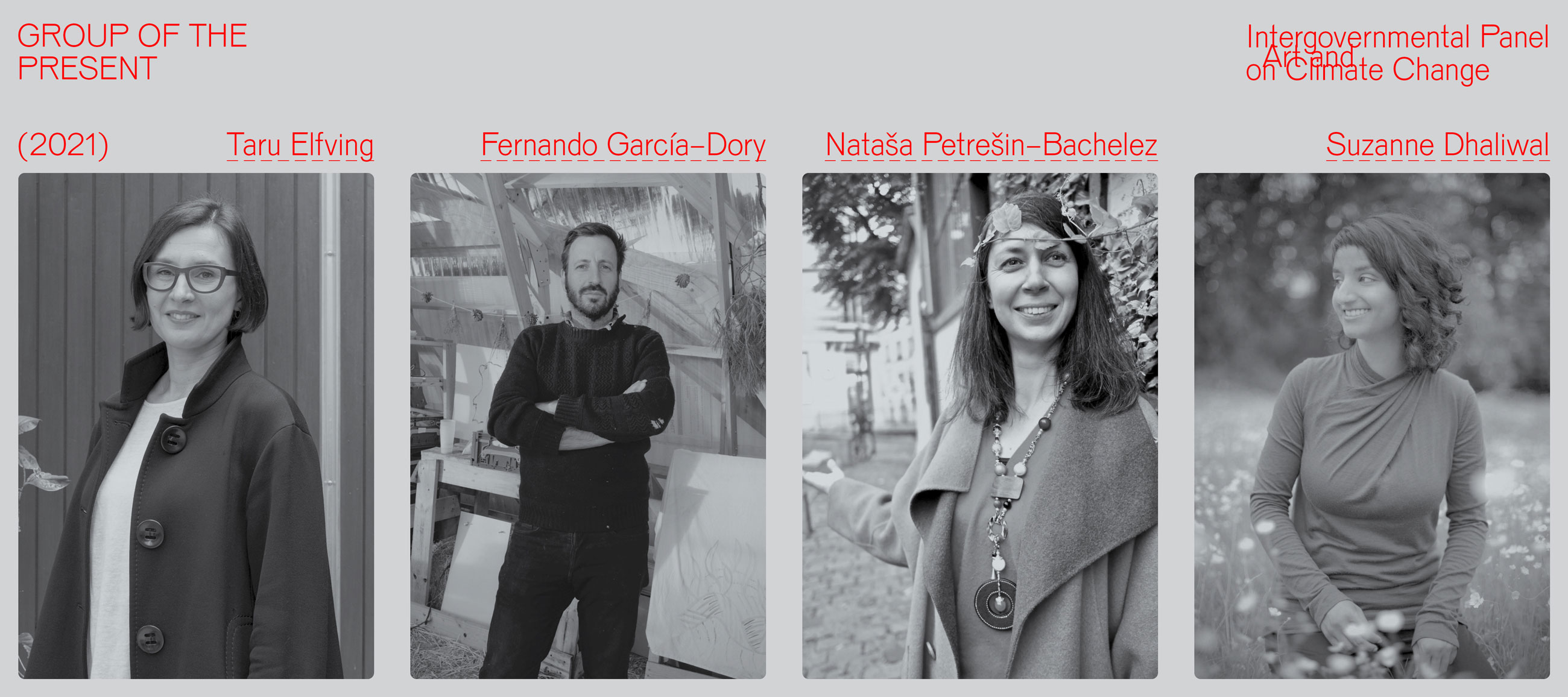
On the other hand, the participants enacting the Future generation4 departed from the fictional scenario of the creation of the Intergovernmental Panel on Art and Climate Change, and gave a retrospective evaluation of its importance, shortcomings, and impact on future societies and artistic practices, among other questions such as: How did this institution come about? How did art agents and institutions manage to act long-term under the short-termism of the Present’s political and economic structures? Were art agents and institutions able to prefigure more-than-human institutional ecologies? How have the transformations brought about by the IPACC shaped the Future(s) participants find themselves in?
Group of the Future
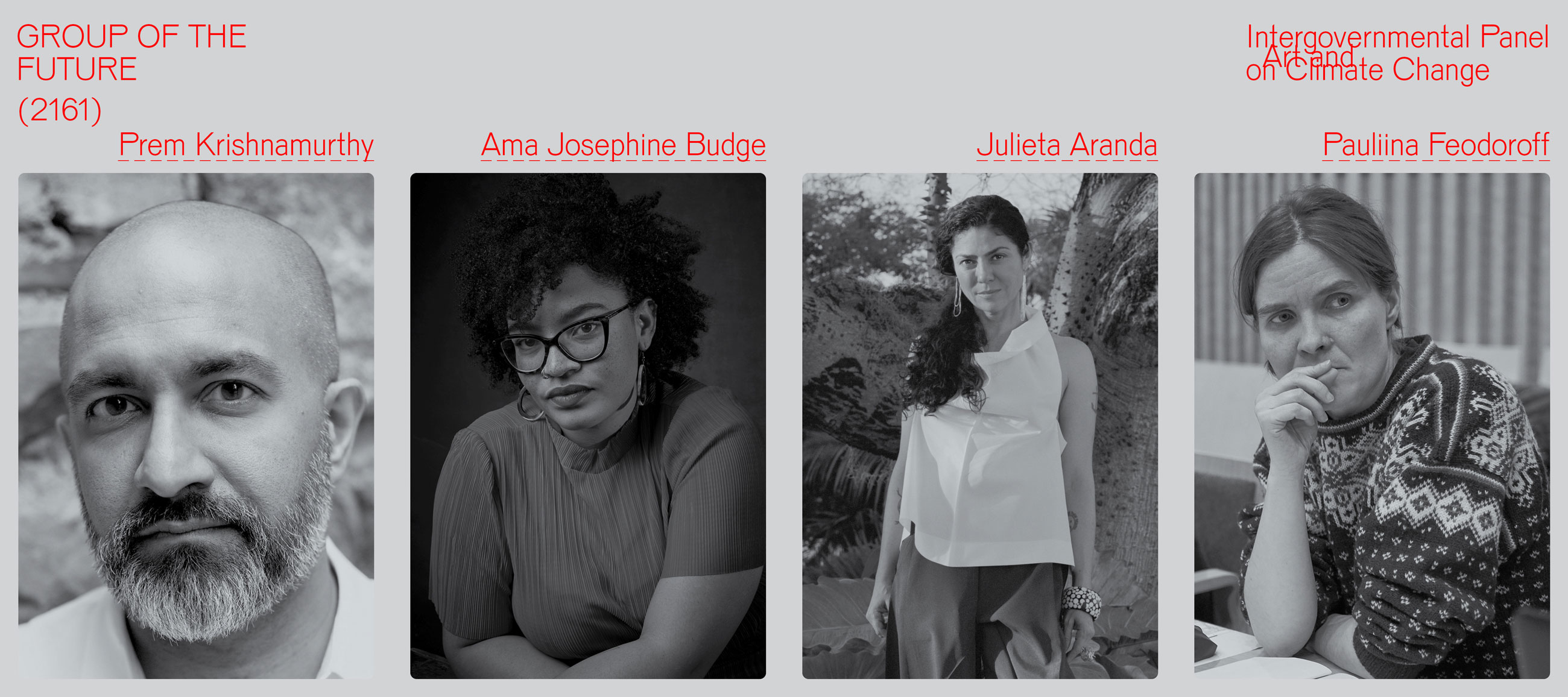
After two separate round-tables, when each group discussed their scenario and associated set of questions, the Present and the Future met on the third and final day of the event. Gathering in a public assembly, participants from both generations shared their views and ideas and joined forces in speculating on strategies for a meta-institution to come that could allow for arts and culture to gain further traction as fundamental voices in the discussion and action on climate crisis, in alliance with the scientific community, policymakers, among other key-agents. Throughout the three days of the event the audience was also invited to be an active participant in this conversation and in the role-play that potentialized it.
Group of the Future
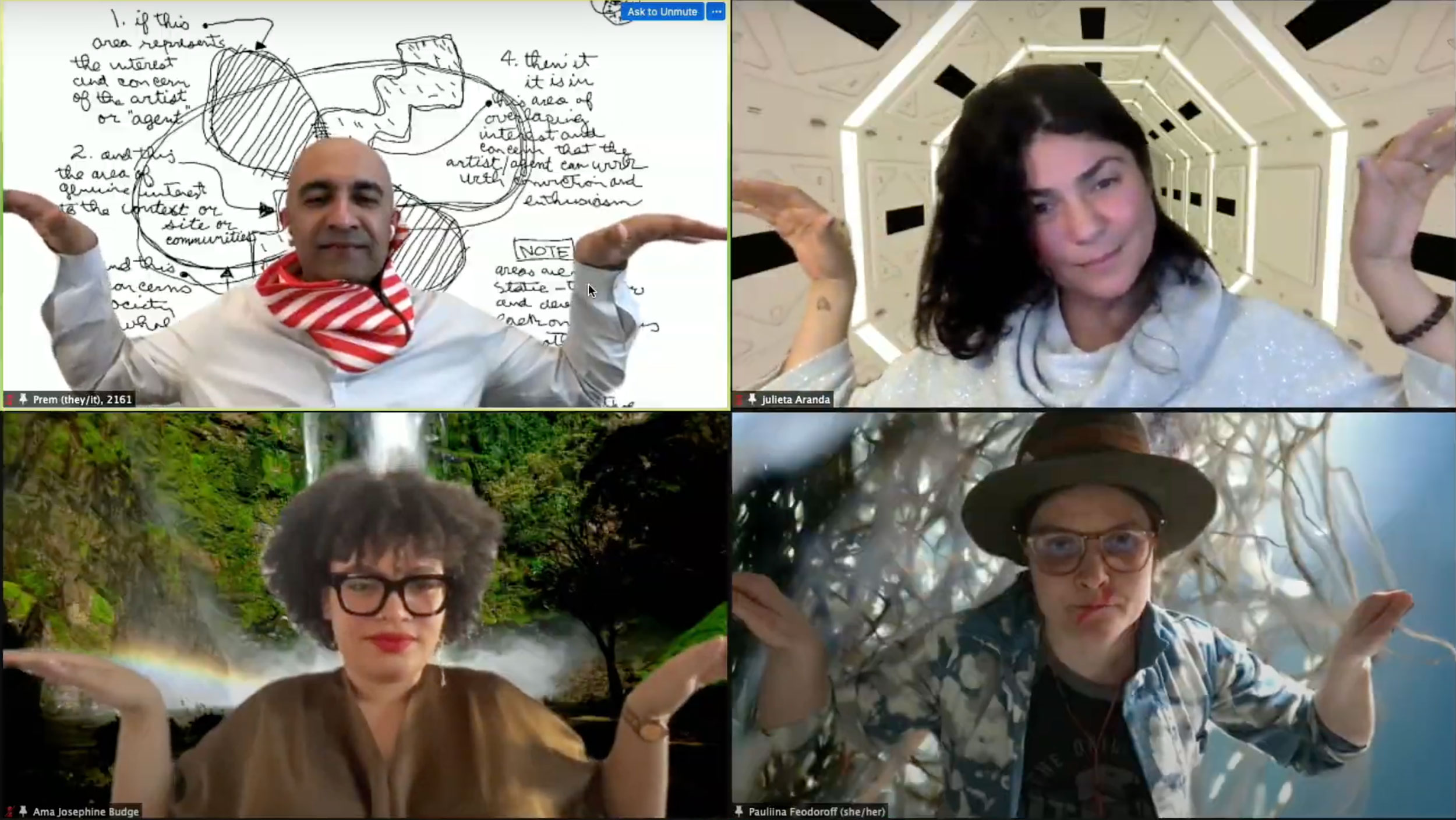
IPACC WG IV
The second symposium in 2022, built upon the previous year’s intergenerational discussion but was structured differently. The discussion departed from the IPCC’s structure of 3 Working Groups (WG), and imagined a 4th group within the IPACC. The Intergovernmental Panel on Art and Climate Change: Working Group IV (IPACC WG IV) occurred after the publishing of the reports by the IPCC’s three Working Groups, which constituted the influential 6th Assessment Report (AR6): Working Group I- the physical science basis, WG II- impacts, adaptation and vulnerability, and WG III- mitigation. After the event, the IPCC published the AR6 Synthesis Report, the completing piece of their assessment cycle which will bring key information and conclusions to policymakers before the next UN climate summit. The IPACC WG IV opened spaces for discussion to react, reflect and add to the then on-going process, as a way to further speculate on the agency and civic significance of arts and culture towards the climate emergency and its entangled socio-ecological breakdown. The event once again gathered a variety of professionals spanning the fields of art, science, philosophy, policymaking and others,5 in a series of gatherings bridging the divide between analytical and sensorial, verbal and the non-verbal, and the cognitive and affective. The three days of presentations, discussions, performances, sonic-immersions, among others, culminated in an assembly gathering all the contributors from previous days with IPCC Vice-Chairs Dr Youba Sokona and Dr Thelma Krug who were also part of the first symposium.
Liquid Volcanoes, performance by Yasmine Attoumane and Amauta García & David Camargo
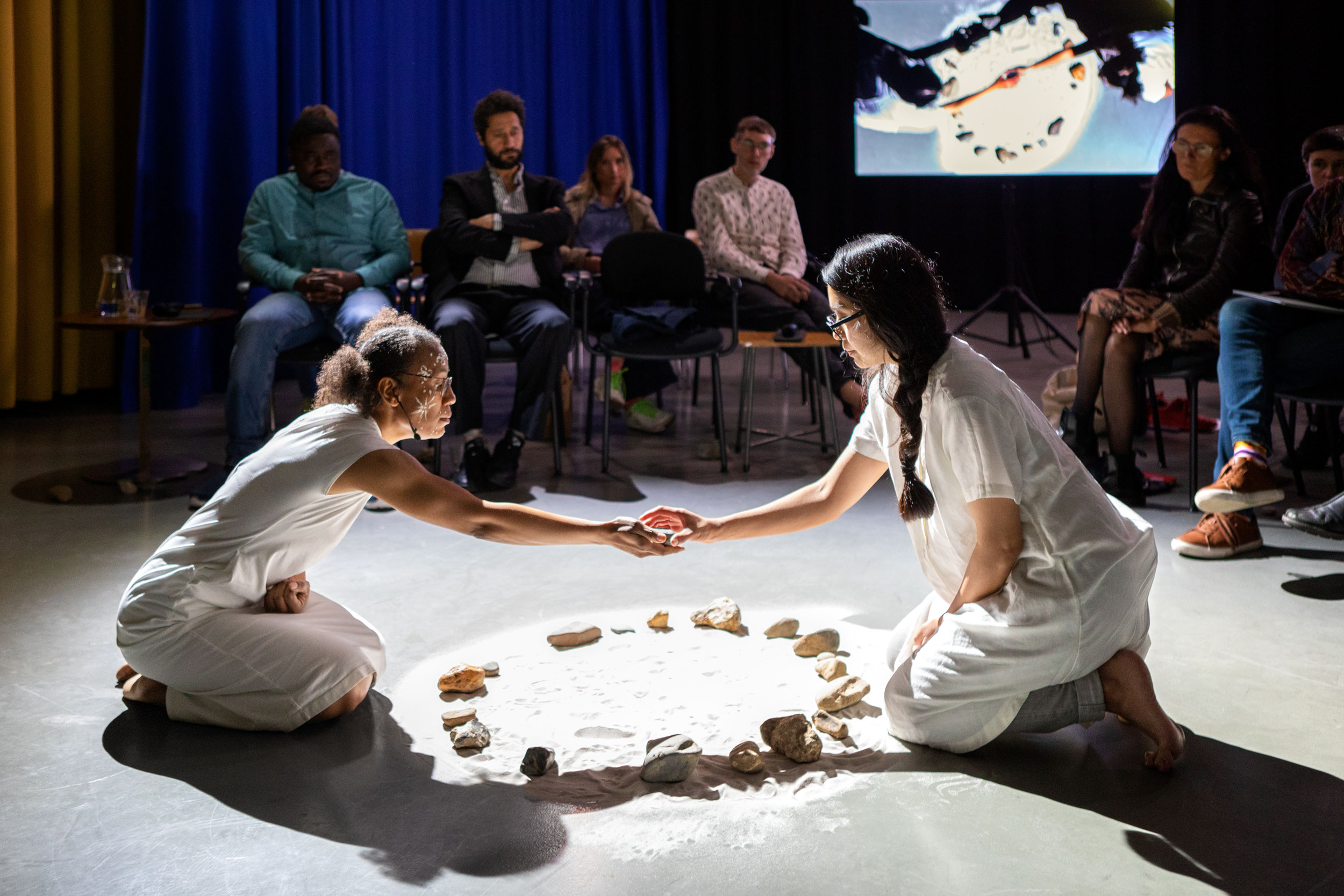
In the months preceding the IPACC WG IV, the Jan van Eyck developed an internal work-in-process rehearsing new ways to foster disciplinary crossovers between arts and science, by bringing to the fore other layers of consciousness, intuitions and affects. The Oneiric Assembly was a workshop led by artist Daniel Godínez Nivón which explored dreams as a collective tool and attempted to foster ways of dreaming together and meeting in dreams. In a series of monthly sessions, the workshop gathered the multidisciplinary group of Jan van Eyck participants and staff, together with scientists and academics invested in the discussion and action towards the environmental crisis. The workshop was introduced by the event Dreaming and Futuring6 which explored the parallels and complementarities between dreams and alternative ‘techniques of futuring’. Authoritative projections of the future, designed by complex climate models, have in recent years co-structured political debates on climate change through the IPCC, but can the attention to the symbolic and affective associations created in dreams also foster transformative visions of the future which mobilize action in the present? A final dreaming exercise will conclude the IPACC WG IV and possibly nurture oneiric encounters after the event.
The Oneiric Assembly: Dreaming as collective tool, presentation by Daniel Godínez Nivón
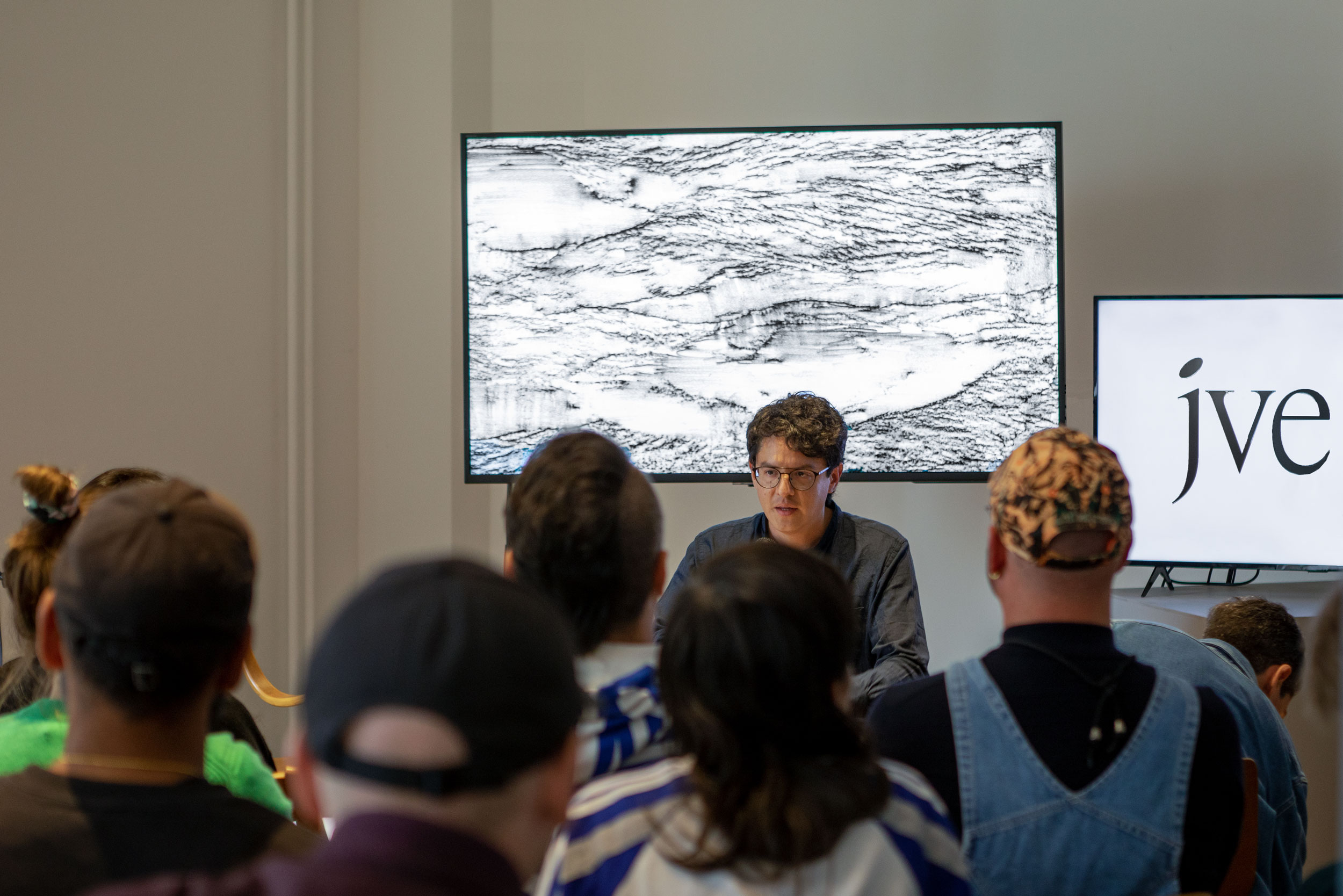
This two-year exercise in speculative thinking was aimed at inciting the discussion and imagination of the agency, roles, and civic significance of art, design and creative practices in relation to climate emergency and environmental breakdown. This question is at the core of the Jan van Eyck Academie institutional focus, a decade-long exploration that is aligned to the Special Report on Global Warming of 1.5 °C, published by the IPCC, which targets 2030 as the year until when our societies can cut CO2 emissions, and remain below one and a half degrees of global warming. This project is both a response to and part of the long-term endeavor expressed by the Urgency Intensive, a multi-day event that takes place annually at the Jan van Eyck Academie.
IPACC WG IV Assembly, gathering all speakers with IPCC Vice-Chairs Dr. Youba Sokona and Dr. Thelma Krug. Moderated by Jeff Diamanti
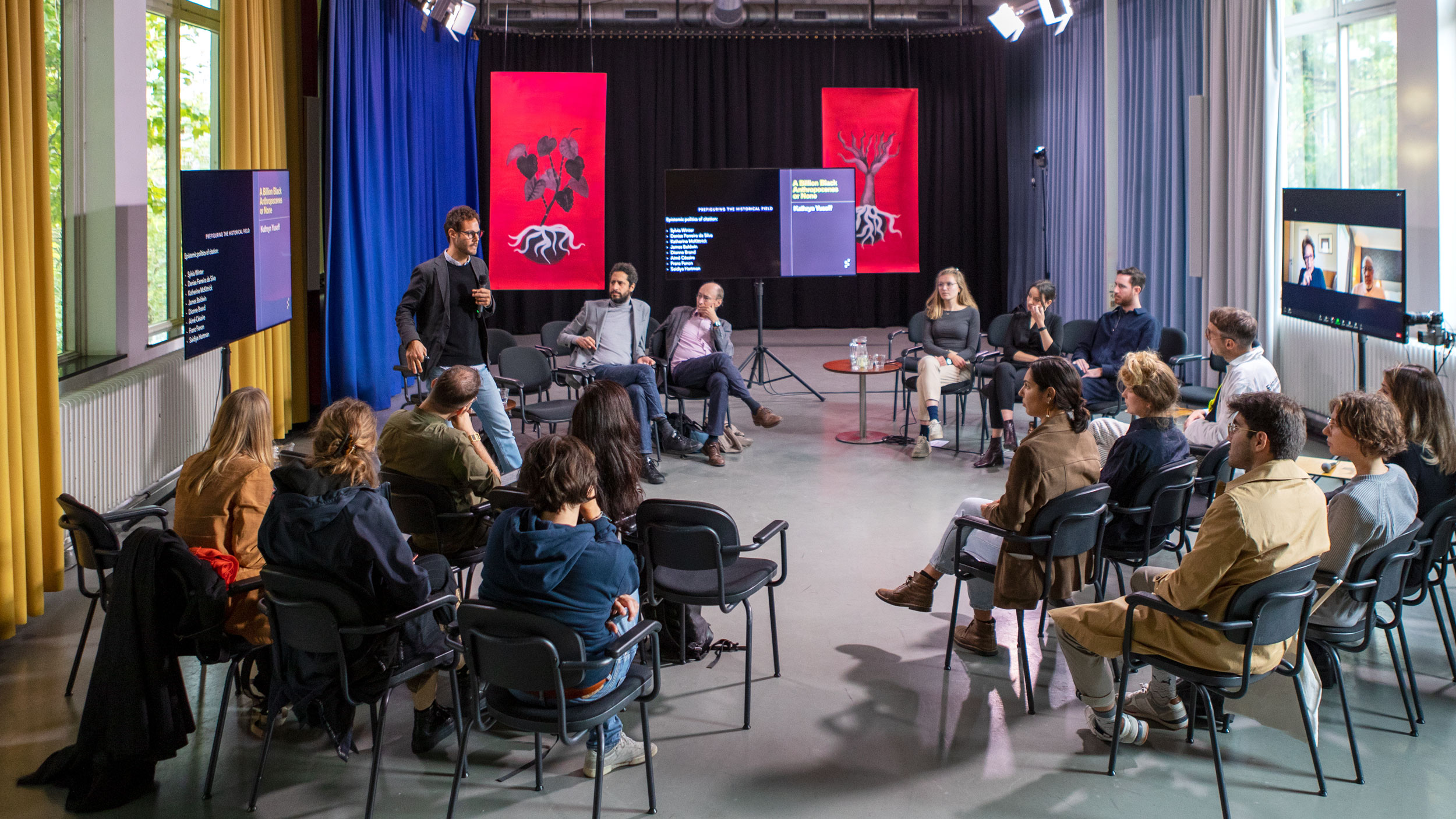
Curatorial text for Intergovernmental Panel on Art and Climate Change, Jan van Eyck Academie, Maastricht (an adaptation and expansion of the curatorial text co-written with Inga Lāce for the first event IPACC)
-
The first day held presentations by philosopher Roman Krznaric and artist Carolina Caycedo, as well as a conversation with the IPCC ’s vice-chairs Dr. Thelma Krug and Dr. Youba Sokona.
-
The curators would like to thank Professor Tatsuyoshi Saijo, founder of Future Design, for the help, inspiration and generosity in sharing so many insights.
-
The group's speakers were: artist Fernando García-Dory; interdependent curator Nataša Petrešin-Bachelez; climate justice creative and researcher Suzanne Dhaliwal; and the conversation was moderated by curator Taru Elfving.
-
The group's speakers were: writer, artist, curator and pleasure activist Ama Josephine Budge; artist Julieta Aranda; theatre director, artist and nature guardian Pauliina Feodoroff; and the conversation was moderated by designer, curator and writer Prem Krishnamurthy.
-
The event had contributions by: Bayo Akomolafe, Bruno Alves de Almeida, Detlef van Vuuren, Hicham Khalidi, Himali Singh Soin & David Soin Tappeser, Jeff Diamanti, Lisette van Beek, Pauliina Feodoroff, Selçuk Balamir, T. J. Demos, Taru Elfving, Teresa Borasino and IPCC Vice-Chairs Dr. Thelma Krug and Dr. Youba Sokona. And Jan van Eyck participants (2021-23): Amauta García & David Camargo, Daniel Frota de Abreu, Daniel Godínez Nivón, Ekaterina Volkova, Hira Nabi, Julien Thomas, Sophie J Williamson and Yasmine Attoumane.
-
The event hosted neuroscientist Dr. Sidarta Ribeiro who has developed influential research on the individual and socio-cultural significance of dreams, the Urban Futures Studio of Utrecht University, which experiments with ‘alternative techniques of futuring’ rethinking the processes, frameworks and actors which devise and circulate our common ‘futures,’ and artist Daniel Godínez Nivón.